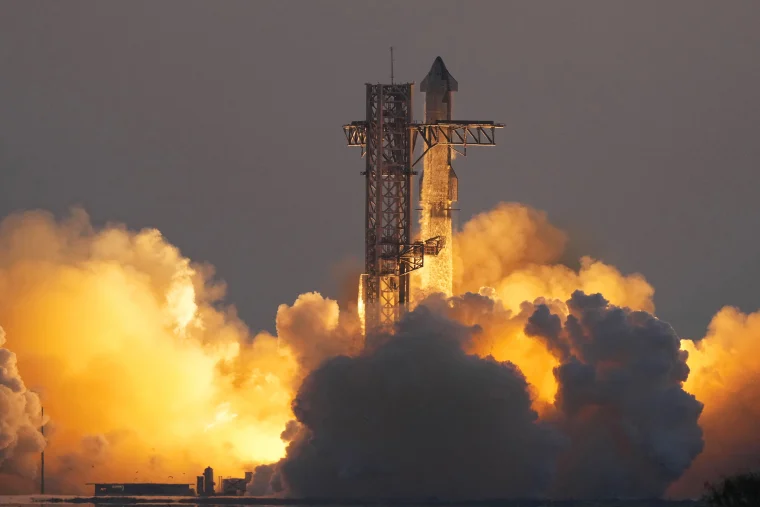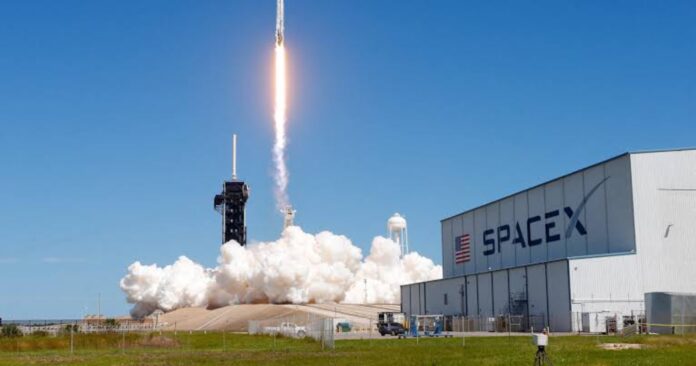SpaceX has made significant strides in its ambitious space exploration goals with the successful launch of its latest Starship test flight on Sunday morning. Liftoff occurred at 8:25 a.m. ET from the company’s Starbase facility in Boca Chica, Texas. This test marks another important step for the Starship program, which aims to eventually carry humans to the Moon and Mars.

Key Highlights:
- The mission featured the Super Heavy rocket booster topped with the uncrewed Starship spacecraft.
- The Super Heavy booster was successfully caught midair using SpaceX’s innovative “chopsticks” for the first time.
- The Starship spacecraft practiced landing manoeuvres over the Indian Ocean during the mission.
- SpaceX aims to reduce the costs of space travel through reusable rocket technology.
Ambitious Goals for Space Exploration
The mission included a groundbreaking attempt to manoeuvre the 232-foot-tall rocket booster to a landing structure after it burnt through most of its fuel. In a spectacular display of engineering, the Super Heavy was successfully caught midair by SpaceX’s massive metal “chopsticks.” Meanwhile, the Starship spacecraft continued its journey, using its onboard engines to practice landing manoeuvres over the Indian Ocean.
This flight is part of SpaceX’s strategy to develop reusable rocket technology, which is crucial for reducing the costs of space travel. The company has ambitious plans to use the Starship capsule as a landing vehicle for NASA astronauts as part of the Artemis III mission, scheduled for 2026. With government contracts worth nearly $4 billion, SpaceX aims to play a pivotal role in humanity’s return to the Moon.
Progress Amidst Challenges
The journey of the Starship program has been marked by a series of test flights since 2019, progressing from simple hops to fully integrated launches. The first integrated test flight in April 2023 ended in an explosion minutes after takeoff, highlighting the risks associated with pioneering technology. However, recent tests have shown significant improvements, including successful reentry manoeuvres during the June test flight.
Despite these advancements, SpaceX faces challenges in the quest for reusability. The Super Heavy booster recovery is a natural first step, drawing on the company’s experience from the Falcon 9 rocket program, where booster landings have become routine. The recovery process will be facilitated by a special tower called “Mechazilla,” designed to catch the rocket midair and minimise turnaround time.
Looking to the Future of Space Travel
As SpaceX looks toward the future, the successful execution of this test flight opens the door for even bolder projects. A critical next step involves figuring out how to refuel Starship while in orbit, necessary for missions to the Moon and beyond. NASA’s Artemis program aims to land astronauts on the lunar surface for the first time since the Apollo era, and any delays in Starship’s development could impact this timeline, reshaping the future of human space exploration.
READ ALSO: UKWALA SUPERMARKET LISTED AMONG 32 COMPANIES FACING DISSOLUTION IN KENYA
